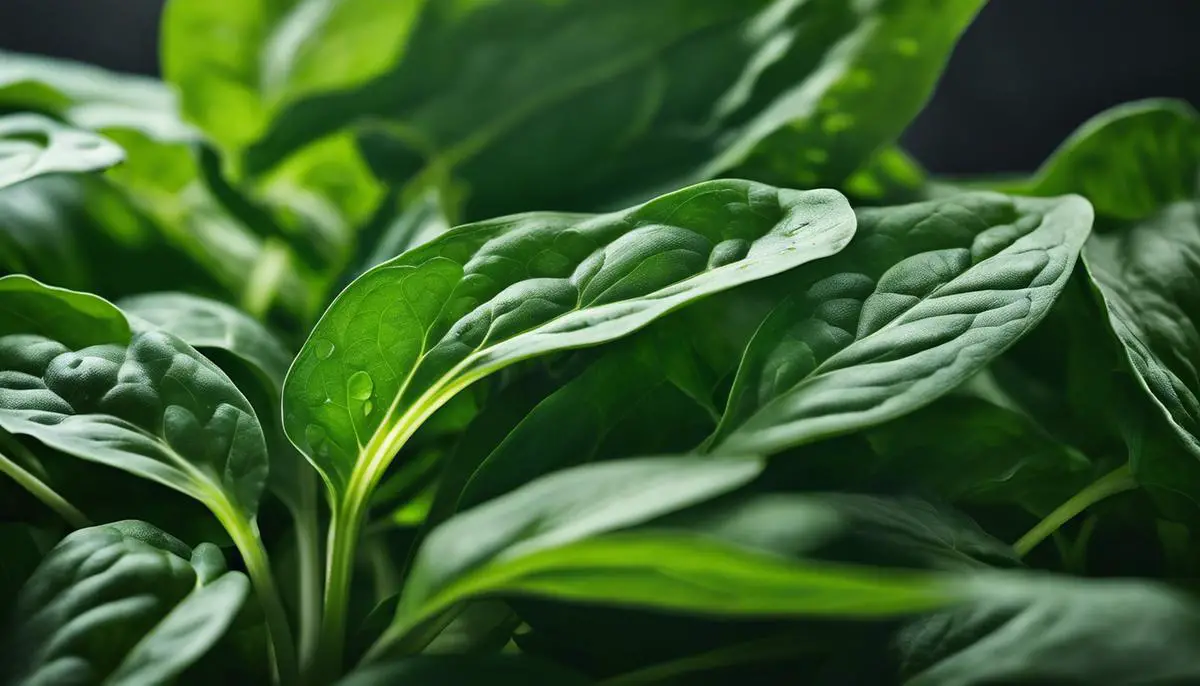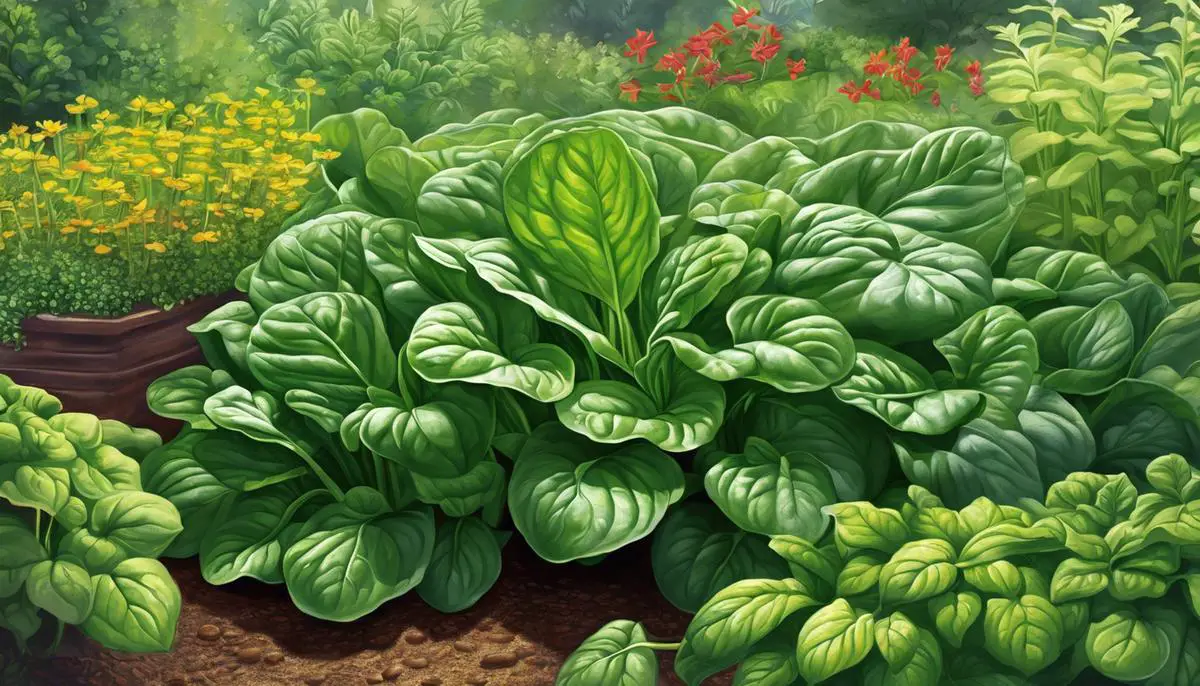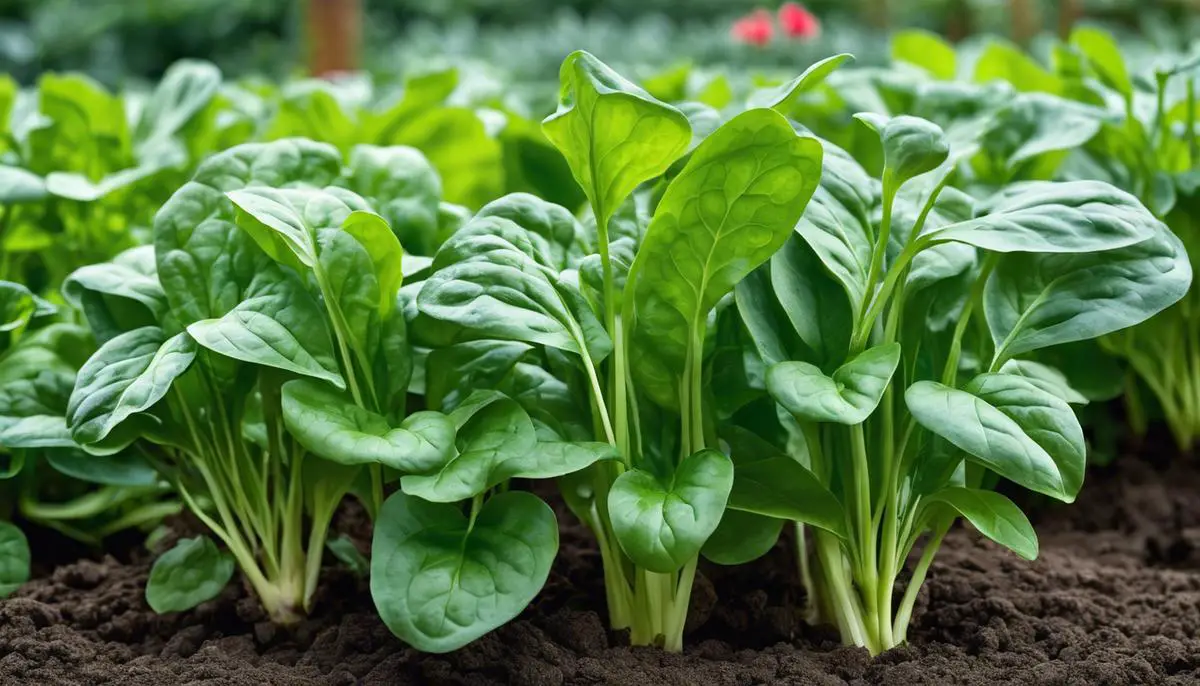Planting your garden is more than just a hobby; it’s an opportunity to understand nature and harness its potential for abundant growth. The art of grouping beneficial plants together – known as “companion planting” – offers one such insight, especially when it comes to growing spinach. By choosing the right companions for your spinach crop, you can not only enhance its growth but also ensure overall garden health. This comprehensive guide unpacks the concept of plant companionship, explores its benefits for spinach, identifies ideal companion plants, and provides tips to avoid spinach antagonists, equipping you with knowledge that can help you grow a thriving spinach crop.
Understanding Plant Companionship
Delving into gardening can feel like encountering an articulate language crafted over millennia by Mother Nature herself. One of the key lessons it teaches is the idea of plant companionship or ‘companion planting.’ This principle holds significant importance in the cultivation of several plants, and one shining example is spinach.
Reader Poll: What online courses would interest you?
Companion planting is essentially a natural process for managing pests, enhancing growth, and encouraging the pollination process. This ancient gardening method can be likened to placing puzzle pieces together, stimulating mutual growth in an interdependent and harmonious manner. Some plants are like lifelong friends; they thrive best when placed together. On the flip side, certain plants are like sworn enemies, hindering each other’s progress when sown too close.
So, what’s the story with spinach? This leafy green is known for its dietary fiber and an impressive nutritional profile. The spinach plant loves a little companionship to reach its peak potential. But whom does spinach befriend in the garden’s network of alliances and enmities?
Well, the best companion plants for spinach are crops that enrich the soil with essential nutrients and create a physical environment that’s conducive to spinach growth. Radishes, strawberries, and onions are known to be excellent companions for spinach.
Credit goes to their unparalleled capability to fend off pests, a requirement for the healthy growth of the spinach plant. Emitting a strong aroma, these plants deter pests that commonly target spinach.
Subscribe to our newsletter!
Another impeccable companion for spinach is the tall, imposing corn plant. It stands like a knight in shining armor, providing the much-needed shield against harsh sun rays. This way, the spinach enjoys the shade it needs without compromising on its access to sunlight.
Peas and beans are two other vegetables that make good companions for spinach. They are known as “fixers,” meaning they have the ability to fix nitrogen in the soil, which is a nutrient that spinach requires in high quantities to flourish.
However, not all plants are cozy buddies for spinach. Plants like potatoes and celery are to be kept at a safe distance since they compete for the same nutrients, potentially stunting the spinach’s growth.
Undertaking plant companionship in gardening isn’t just a random trial and error process, it’s about understanding the unique requirements of each plant. The beneficial bonds formed between companion plants strengthen the overall ecosystem of the garden, leading to abundant, healthier yields. When it comes to spinach, understanding its preferred company is key to thriving harvests season after season. Without a doubt, diving into the garden’s companionship dynamics takes green thumbs to the next level of gardening proficiency.

Benefits of Companion Planting for Spinach
Unearthing the Power of Companion Planting with Spinach
Companion planting is equivalent to fostering friendships in the garden, with plants growing in harmony, just like we do with our pals. Let’s delve deeper into the intriguing world of spinach and its companion plants beyond what was covered earlier and explore why this practice can make a significant difference in their growth and productivity.
As seen in nature, no plant grows in isolation. They are part of a larger ecosystem that thrives on their interdependence. Some plants fare better when grown with specific neighbors that complement their needs and growth habits, making companion planting a crucial aspect of gardening, especially for spinach.
While we’ve previously identified radishes, strawberries, onions, corn, peas, and beans as great companions for spinach, let’s examine why these piquant plants form such beautiful friendships.
Radishes, for instance, act as a natural pest deterrent. They exude a strong aroma that can help shoo away common pests like aphids, keeping your spinach safe and pest-free. Strawberries, on the contrary, do well in the same cool conditions as spinach. They offer ground cover, thus, reducing weed competition for spinach.
Onions, with their robust smell, effectively repel many pests. By planting them around your spinach, you create a protective boundary from harmful bugs. Now, peas and beans are like guardians to spinach. They enrich the soil with nitrogen, a nutrient spinach loves, and give an overall boost to its growth.
Corn shields the tender spinach from the harsh sun, providing the low-light conditions this leafy green craves in the hot summer. This allows spinach to grow longer even during the warm season, thus extending its harvest period.
However, it isn’t a harmonious garden party for all. Spinach isn’t a fan of sharing its space with potatoes or celery. These plants wrestle spinach for nutrients, creating a hostile environment stunting our leafy friend’s progress. Hence, it’s best to plant these away from spinach.
Always remember that plants, like people, have unique needs and preferences. Understanding these nuances can help nurture a balanced garden ecosystem where plants assist each other in growth and protection. Companion planting, if executed flawlessly, can lead to a plentiful, healthier, and more sustainable garden, especially for wholesome spinach cultivation.
So, next time you venture into your vegetable patch with a trowel in hand, carefully consider who your spinach’s neighbors are. Trust us, it will make a world of difference in not just the yield, but also the health of your garden. Ready, set, sow! Let’s grow together by helping our spinach foster their fruitful relationships.

Ideal Spinach Companion Plants
Now, with that base of knowledge in place, let’s delve deeper into spinach’s circle of friends and those that it doesn’t play well with. Whether you are looking to maximize your garden’s yield, manage pests naturally, or simply make the most of your available space, leveraging the concept of companion planting can be a game changer.
Being a cool-weather crop, spinach blooms early and thus, enhances the chances of creating biological diversity in your garden. Let’s start by talking about some of the lesser-known companion plants for spinach.
Cabbage plants can mingle well with spinach. Cabbage worms, a common pest, don’t fancy spinach. Therefore, planting cabbage near spinach may deter these annoying critters. The thick leaves of the cabbage plant can also provide shade for the spinach during hot noon hours, as spinach thrives in cooler temperatures.
Another match for spinach is cauliflower. This leafy green helps suppress weed growth around the cauliflower and can enhance the flavor of the cauliflower. Besides, the chemistry between spinach and legumes such as lentils is quite fascinating. Spinach draws up subsoil nutrients, the lentils, being nitrogen-fixers, improve the fertility of the soil, nourishing the spinach with essential nutrients.
If we turn our attention to flowers, marigold and nasturtium serve as excellent companions for spinach. Their vivid flowers not only beautify the garden but also attract beneficial insects. This results in better pollination and acts as a natural bug repellent, keeping harmful pests at bay.
However, while spinach can enjoy the company of a variety, it’s not friends with every plant out there. Particular cases include tomatoes and beets. You might think these would be a great match due to their growth cycles, but that’s not the case. Tomatoes like heat, and spinach seeks coolness, leading to a conflict of interests. Also, both spinach and beets use a lot of the same soil nutrients, leading to a competition, which can hinder the growth of both the plants.
In conclusion, companion planting is like creating a good neighborhood for plants, where they help each other grow better. Selecting the right companions can result in a healthier spinach crop, lessen the dependence on artificial means of pest control, and fetch a great harvest. However, the rule of thumb remains the same – respect the needs of each plant. The vast world of companion planting opens up numerous possibilities, and trust me, the more you explore, the more fascinating it gets!
Happy gardening, dear green thumbs! With keen observation and a little bit of experimentation, you might just create your version of an ideal vegetable community—one that thrives together, quite literally!

Avoiding Spinach Antagonists
Carrying forward our exploration into the world of companion planting, we now delve into some lesser-known antagonistic plants with spinach and the reasons behind it. This method of planting, backed by time-tested wisdom, involves understanding relationships between plants, appreciating how they can support or inhibit each other’s growth.
Tomatoes and spinach make a classic case of incompatible plant pairing, an aspect we didn’t cover earlier. Not all brightly colored fruits bring happiness to spinach, and our tomato friend is a fine example. Although spinach and tomatoes share the same love for cooler weather, they compete for similar nutrients from the soil, especially calcium. This competition could end in nutrient deficiency for both, resulting in poor growth. Moreover, tomatoes have a larger root system that can overwhelm the meek spinach roots, depriving them of the nutrients they so vitally need.
Another surprising companion to steer clear of when planting spinach is beetroot. While both cherish cool conditions, beetroots release a compound from their roots that hampers the growth of spinach. Unseen to us, beneath the earth, the beetroot’s unique secretion inhibits the spinach roots’ development, ultimately leading to a weaker plant.
Garlic too, despite being a well-respected garden inhabitant and pest deterrence, does not sit well with spinach. This allium family member emits an antagonistic compound that can retard spinach’s growth, making it a bad companion.
Apart from these, it’s essential to monitor plants that prefer a lower pH level than spinach, such as azaleas or rhododendrons. The soil condition favoring these plants is acidic, which inhibits the productivity of spinach which prefers its soil with a neutral pH balance.
In the world of companion planting, there’s always more to learn and experiment. Be open to observation and tweaks in your garden, watch your plants, and follow their clues – they have their ways to communicate their joys and distress. Happy Planting!

As you venture into the art of companion planting, it’s paramount to remember the trust you place in nature to craft a balanced, harmonious garden ecosystem. Your choice of companion plants for your spinach crops isn’t merely about co-location; it’s about nurturing a symbiotic relationship that enriches the soil, controls pests, and supports overall crop health. Armed with the knowledge about spinach’s ideal companions and potential antagonists, you’re well on your way to cultivating a vibrant, bountiful garden. This unique interplay of plants underscores the intricate, intuitive intelligence of nature, inspiring us to grow not just better spinach crops, but better gardens.

